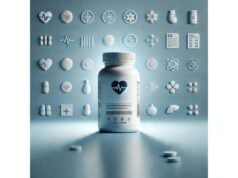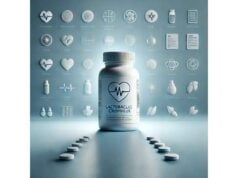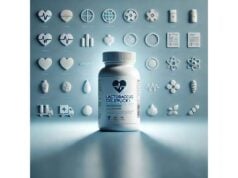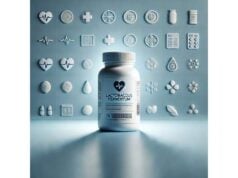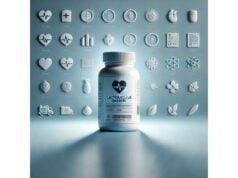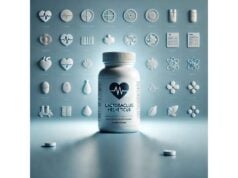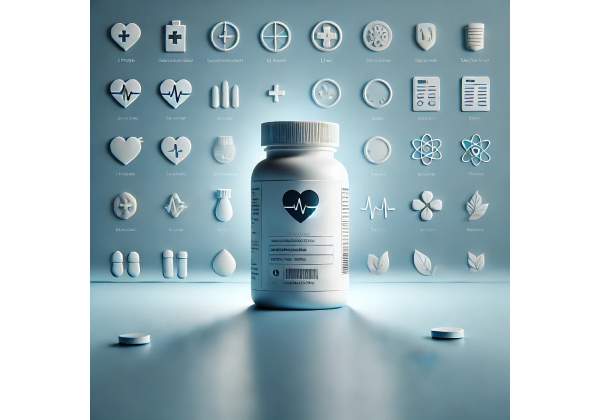
Lactococcus lactis is a workhorse bacterium behind many traditional cheeses and cultured dairy foods—and it is increasingly showing up in dietary supplements. Unlike widely known probiotic genera such as Lactobacillus and Bifidobacterium, L. lactis is best recognized for producing lactic acid and nisin (a natural preservative) and for its ability to “train” parts of the immune system. Certain researched strains, including heat-killed forms sometimes marketed as “postbiotics,” have been studied for upper-respiratory support, exercise-related fatigue, and skin barrier health. Not all strains behave the same, so benefits depend on the exact strain (for example, strains developed to activate plasmacytoid dendritic cells).
In the guide below, you will learn what L. lactis is, where the evidence is strongest, how to choose and use it (foods vs. supplements), practical dosage ranges for live and heat-killed preparations, and how to avoid common mistakes. We also cover safety, side effects, who should steer clear, and how to read labels so you know what you are actually buying and taking.
Essential Insights
- Selected Lactococcus lactis strains support upper-respiratory health and may reduce exercise-related fatigue in athletes.
- Some heat-killed L. lactis “postbiotics” show benefits for skin barrier gene expression and microbiome balance.
- Typical live probiotic intake: 1–10 billion CFU per day; studied heat-killed L. lactis: ~1×10¹⁰ to 1×10¹¹ cells/day.
- Safety note: probiotics can cause gas or bloating; rare bloodstream infections have been reported in high-risk patients.
- Avoid use without medical advice if you are immunocompromised, critically ill, or have central venous catheters or heart valve disease.
Table of Contents
- What is Lactococcus lactis and how does it work?
- Where benefits are strongest: what the research shows
- How to use it daily: foods, supplements, and label tips
- How much Lactococcus lactis per day? Dosage and timing
- Side effects, interactions, and who should avoid it
- Evidence snapshot and choosing the right strain
What is Lactococcus lactis and how does it work?
Lactococcus lactis is a Gram-positive, lactic acid–producing bacterium that thrives in milk and plant environments. It is a cornerstone “starter culture” for cultured dairy, where it acidifies milk and contributes to flavor and texture development. Beyond the creamery, L. lactis is interesting for human health because some strains produce bacteriocins (notably nisin) that inhibit certain microbes, and some can interact with immune pathways in the gut and beyond.
Two preparation types matter:
- Live probiotic strains (CFU-based): These products deliver viable cells measured in colony-forming units (CFU). Live L. lactis may help maintain a healthy microbial community and produce beneficial metabolites during transit through the gut.
- Heat-killed strains (postbiotics; cell count–based): Heating inactivates the microbe while preserving structural components (such as DNA, cell wall, and surface molecules) that can still signal to the immune system. These are typically labeled by total cells (e.g., 1×10¹⁰ cells/day) rather than CFU.
A key example is a specific L. lactis strain developed for its ability to activate plasmacytoid dendritic cells (pDCs)—immune sentinels that trigger antiviral interferon responses. In controlled trials, ingesting this heat-killed strain increased maturation markers on pDCs and upregulated antiviral pathways. Other clinical work examines skin health, where oral intake of heat-killed L. lactis has been associated with favorable changes in skin barrier–related genes (such as tight junction proteins) and with a more stable skin microbiome over time.
Mechanistically, L. lactis interacts with pattern-recognition receptors (e.g., toll-like receptors) and can modulate signaling cascades that influence antiviral defenses, epithelial barrier integrity, and inflammatory tone. Strain-specific exopolysaccharides and cell wall components likely shape these effects. Importantly, benefits are strain-bound: one L. lactis strain’s outcome cannot be assumed for another.
A final property worth noting is nisin, a ribosomally synthesized antimicrobial peptide produced by some L. lactis subsp. lactis strains and used worldwide as a food preservative. While nisin’s food-safety role is well documented, it is not the same as probiotic or postbiotic supplementation; most dietary supplements do not rely on nisin content for benefit claims.
Bottom line: L. lactis is more than a cheese culture. Certain strains—sometimes even in heat-killed, nonviable form—can influence immune signaling and skin barrier pathways. Always look for the exact strain on the label to align with outcomes seen in clinical studies.
Where benefits are strongest: what the research shows
Upper-respiratory and immune support (strain-specific): In randomized, placebo-controlled trials, a heat-killed L. lactis strain designed to activate pDCs has shown measurable immune effects. In athletes undergoing sustained training, two weeks of daily intake increased pDC maturation markers and was associated with fewer cumulative days of fatigue; in some studies, participants reported fewer days with cold-like symptoms during periods of high training load. In schoolchildren, daily beverages delivering approximately 1×10¹¹ heat-killed cells were associated with fewer missed school days due to infectious illness and improved well-being scores during the intervention. These findings suggest a role in immune readiness, especially under stressors that can suppress mucosal defenses.
Skin health and barrier function: A double-blind trial in healthy adults found that oral intake of heat-killed L. lactis stabilized the skin microbiome (smaller shifts in dominant taxa over time compared with placebo) and upregulated tight junction and antimicrobial peptide genes in the skin. These genomic shifts are consistent with improved barrier maintenance and innate defense, which could explain anecdotal reports of calmer, less reactive skin with continued use.
Atopic dermatitis (exploratory): In a study of children with atopic dermatitis consuming yogurt that included an L. lactis strain, symptom scores improved over eight weeks. While this mixed-culture study and associated mouse work point toward immune-modulating potential, results cannot be generalized to all L. lactis strains or to stand-alone supplements without matching the strain and delivery context.
Fatigue and performance context: During uninterrupted training blocks, immune stress contributes to malaise and URTI-like symptoms. Clinical trials with the heat-killed pDC-activating L. lactis strain have repeatedly measured fewer days of fatigue and favorable shifts in autonomic indicators following exercise challenges. The implication is not a direct performance boost but a recovery and resilience effect mediated through immune-neuro interactions.
What these data mean for you:
- Benefits concentrate around immune resilience during stress (intense training, school exposure season) and skin barrier maintenance.
- Effects are strand-dependent and dose-dependent; look for the exact strain name (often ending with numerals/letters) and the daily cell count for heat-killed products.
- Outcomes tend to appear over 2–8 weeks of daily use. For situational support (e.g., a heavy training block), begin 1–2 weeks beforehand.
Limits to keep in mind: Studies often involve specific populations (athletes, schoolchildren) and are sponsored by ingredient developers. Benefits are meaningful but modest, functioning as supportive measures rather than replacements for vaccination, medical care, or infection control.
How to use it daily: foods, supplements, and label tips
Food sources: Traditional cheeses and cultured dairy frequently include L. lactis as a starter culture. Eating these foods contributes to microbial diversity exposure and beneficial fermentation products, but because cooking, aging, storage, and product variability affect viability and dose, foods are not reliable substitutes for a clinical-grade supplement when you want a specific, reproducible effect.
Supplement forms:
- Live probiotics (CFU-based): Capsules, powders, or sachets listing “Lactococcus lactis [subspecies/strain]” with a CFU count per serving. These may be single-strain or part of a multi-strain blend.
- Heat-killed/postbiotics (cell-count–based): Often labeled as “heat-killed Lactococcus lactis [strain].” These do not require refrigeration, have excellent shelf stability, and aim for immune signaling rather than colonization.
Choosing quality:
- Match the strain to benefits. The bottle should show the full strain name (e.g., “Lactococcus lactis subsp. lactis JCMXXXX” or a commercial alias). Without this, you cannot verify evidence.
- Dose transparency: Live products should declare CFU at the end of shelf life (not at manufacture); heat-killed products should list cells per day.
- Clinical alignment: Look for products studied in humans at or near the same dose and duration as on your label.
- Excipients and allergens: Many products are dairy-derived. If you are milk-protein allergic, choose dairy-free certified options.
- Storage: Live L. lactis often benefits from refrigeration; heat-killed forms can be stored at room temperature away from humidity and heat.
Practical routines:
- Immune support during training: Start daily intake 1–2 weeks before a demanding block and continue throughout.
- Seasonal use: For school or office exposure seasons, daily intake for 8–12 weeks is reasonable.
- Skin goals: Expect 8 weeks for measurable changes in skin gene expression and microbiome stability; combine with basic barrier care (gentle cleanser, moisturizer, photoprotection).
Pairing tips:
- With live probiotics, add prebiotic fibers (e.g., oats, beans, fruit, inulin) to support beneficial microbial activity.
- Avoid taking live probiotics immediately with very hot beverages. For postbiotics, temperature does not matter.
- If you use antibiotics, separate live probiotics by 2–3 hours; postbiotics can be taken anytime.
How much Lactococcus lactis per day? Dosage and timing
Live, CFU-based products: A common general-health range is 1–10 billion CFU/day for adults, taken once daily with food. Some multi-strain formulas provide higher totals; more is not always better if the strain and outcome are mismatched. Because L. lactis is less ubiquitous than other genera in probiotic blends, match the strain and CFU to the intended benefit.
Heat-killed/postbiotic preparations: Clinical trials of a pDC-activating heat-killed L. lactis strain have used ~1×10¹⁰ to 1×10¹¹ cells/day, often as a single daily serving (capsule or beverage). In athletes, 14 days at ~1×10¹⁰–10¹¹ cells/day preceded improvements in fatigue-related indices during a controlled training block; in schoolchildren, beverages delivering 1×10¹¹ cells/day were used over several weeks.
Timing:
- Take live probiotics with a meal to buffer stomach acidity.
- Heat-killed forms can be taken with or without food, any time.
- For training or travel, consistency matters more than clock time; pick a time you can keep daily.
Titration and sensitivity: If you are new to probiotics, start at the lower end of the range for a week, then increase. Mild, temporary gas or bloating is common during the first few days, particularly with live strains.
Special populations:
- Children: Some products used in research provided 1×10¹¹ heat-killed cells/day in beverage form for school-age children. For younger ages or live probiotics, use child-specific products and consult a pediatric clinician.
- Older adults: Begin at standard adult doses; review medications and comorbidities with a clinician, especially if immunosuppressed.
- Pregnancy and lactation: Safety is likely for healthy individuals using food-grade strains, but data for specific L. lactis supplements are limited; discuss with your obstetric clinician first.
When to reassess: If you see no change after 8–12 weeks of daily use (and your goal is reasonable for the strain), consider switching strains or discontinuing. For seasonal or situational use (e.g., a marathon build), stop when the relevant period ends and resume as needed.
Side effects, interactions, and who should avoid it
Common, usually mild: Gas, bloating, and transient digestive changes can occur, especially when starting a live probiotic. These typically resolve within a few days as your gut adapts. Heat-killed products are less likely to cause GI discomfort, since they do not ferment in the gut.
Allergies and sensitivities: Some L. lactis supplements originate from dairy fermentation lines. If you have milk protein allergy, choose a product certified dairy-free; lactose intolerance alone is usually not a problem with capsules, but verify excipients.
Rare but serious risks: Cases of Lactococcus lactis bacteremia and endocarditis have been documented, generally in individuals with underlying risk factors (e.g., immunosuppression, structural heart disease, invasive devices) and sometimes with probiotic exposure. Though very uncommon, these reports guide prudent caution.
Who should avoid or seek medical guidance first:
- People who are immunocompromised (e.g., due to chemotherapy, uncontrolled HIV, high-dose steroids).
- Individuals with central venous catheters, prosthetic heart valves, or a history of endocarditis.
- Patients in critical care or with severe pancreatitis, unless used under medical supervision.
- Those with severe food allergies if the product cannot document allergen-free manufacturing.
Medication interactions: L. lactis does not have known direct drug–drug interactions. For live probiotics during antibiotic therapy, separate dosing by 2–3 hours to reduce kill-off. Immunomodulatory supplements may, in theory, affect autoimmune activity; if you are on immune-targeting medications, discuss use with your specialist.
When to stop and call your clinician: Persistent high fever, chills, or new heart murmur; worsening GI pain; rash or signs of an allergic reaction; or any severe symptom after starting a probiotic or postbiotic.
Safety comfort with heat-killed forms: For individuals who prefer to avoid live microbes, heat-killed L. lactis offers an evidence-based alternative focused on immune signaling. These products also have excellent shelf stability and are not impacted by antibiotics.
Evidence snapshot and choosing the right strain
Strain matters most. “Lactococcus lactis” is the species; benefits hinge on the specific strain (the alphanumeric code that follows the species and subspecies). For example:
- A pDC-activating heat-killed strain has repeatedly shown:
- Increased pDC maturation markers after two weeks of intake.
- Fewer cumulative days of fatigue during continuous training in athletes.
- Reduced school absenteeism due to infectious diseases in children during intervention periods.
- Upregulation of skin barrier–related genes (e.g., CLDN1/CLDN12) and antimicrobial peptides, with more stable skin microbiome composition in adults over eight weeks.
- A food-culture strain included in yogurt showed improvements in atopic dermatitis scores in children in a mixed-culture context; mechanistic mouse work suggests broad down-regulation of inflammatory T-helper subsets. Because the yogurt contained multiple species, results should be applied cautiously and ideally replicated with the isolated strain.
How to read a label for clinical alignment:
- Locate the full strain name (e.g., “Lactococcus lactis subsp. lactis [STRAIN CODE]”). Without it, you cannot map the product to studies.
- Check the daily dose against research norms: live CFU (e.g., 1–10 billion CFU/day); heat-killed cell counts (e.g., 1×10¹⁰ to 1×10¹¹ cells/day).
- Match the target outcome: immune resilience under stress, skin barrier support, or general wellness.
- Duration: Expect 2–8 weeks depending on the goal.
- Quality assurances: Look for third-party testing, declared counts through end of shelf life, and clear allergen statements.
What the evidence does not show: L. lactis is not a cure for infections or chronic skin conditions; it supports immune function and barrier maintenance. It does not replace vaccines, hand hygiene, sleep, nutrition, or medical treatment.
Future directions: Researchers are exploring L. lactis as a delivery chassis for therapeutic peptides and antigens and as a postbiotic platform for targeted immune nudging. Expect more trials clarifying which subpopulations benefit most and which biomarkers best predict response.
Take-home: If your goals include immune readiness during stress or skin barrier support, and you prefer a stable, easy-to-store product, consider a heat-killed, strain-specific L. lactis at clinically aligned doses. For general digestive diversity, a live, multi-strain formula that includes L. lactis alongside other well-characterized species is reasonable.
References
- Effects of Ingesting Food Containing Heat-Killed Lactococcus lactis Strain Plasma on Fatigue and Immune-Related Indices after High Training Load: A Randomized, Double-Blind, Placebo-Controlled, and Parallel-Group Study 2023 (RCT)
- Impact of Infectious Disease after Lactococcus lactis Strain Plasma Intake in Vietnamese Schoolchildren: A Randomized, Placebo-Controlled, Double-Blind Study 2022 (RCT)
- Effects of Heat-Killed Lactococcus lactis Strain Plasma on Skin Homeostasis-Related Genes and the Skin Microbiome among Healthy Adults: A Randomized Controlled Double-Blind Study 2021 (RCT)
- Effect of the Lactococcus Lactis 11/19-B1 Strain on Atopic Dermatitis in a Clinical Test and Mouse Model 2020 (Clinical Test and Mouse Model)
- Lactococcus lactis bacteraemia in a patient on probiotic supplementation therapy 2021 (Case Report)
Disclaimer
This article is for educational purposes only and is not a substitute for professional medical advice, diagnosis, or treatment. Always seek the guidance of your physician or other qualified health provider with any questions about a medical condition, supplement use, potential interactions, or changes to your health plan. Never ignore professional advice or delay seeking it because of something you have read here.
If you found this guide helpful, please consider sharing it with friends or colleagues on Facebook, X (formerly Twitter), or your preferred platform, and follow us for future updates. Your support helps us continue producing clear, trustworthy, people-first health content.

